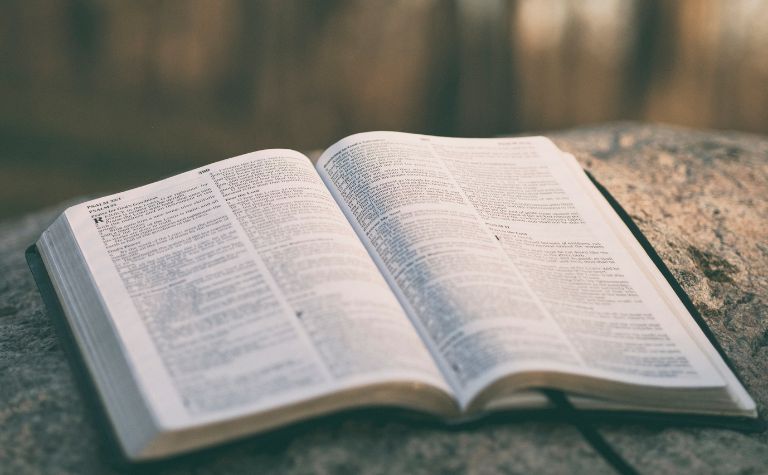Christians have revered and worshiped Jesus of Nazareth for over 2,000 years. Even many non-Christians are interested in his life and teachings. Many believers and non-believers are also interested to know what Jesus looked like.
The Bible describes Jesus as an average-looking man whose appearance didn’t stand out in a unique way. The Gospels mention certain clothes he wore. John describes a heavenly vision he had of Jesus in Revelation. Isaiah mentions his physical appearance when he was crucified.
What exactly does Isaiah say about Jesus’ appearance? What clothes of Jesus do the Gospels mention? What image of Jesus did John see? Keep reading to learn the answers to these questions and others.
Also see Who Is the Bride of Jesus Christ? to learn more.

What does Isaiah say about Jesus’ appearance?
Bible readers might expect that Matthew, Mark, Luke, or John would describe Jesus’ appearance. They occasionally mention Jesus’ clothes (see below) and describe his physical condition (e.g. he got tired; John 4:6), but they never describe features like his height, weight, skin tone, eye color, or hair color.
The prophet Isaiah, in the Old Testament book that bears his name, provides some insight into Jesus’ physical appearance. However, those who are looking for a head-to-toe description will be disappointed. Instead, Isaiah 53:2 states what wasn’t true of Jesus’ appearance.
| Translation | Isaiah 53:2 |
|---|---|
| ESV | “For he grew up before him like a young plant, and like a root out of dry ground; he had no form or majesty that we should look at him, and no beauty that we should desire him.” |
| KJV | “For he shall grow up before him as a tender plant, and as a root out of a dry ground: he hath no form nor comeliness; and when we shall see him, there is no beauty that we should desire him.” |
| NASB | “For He grew up before Him like a tender shoot, And like a root out of parched ground; He has no stately form or majesty That we should look upon Him, Nor appearance that we should be attracted to Him.” |
| NIV | “He grew up before him like a tender shoot, and like a root out of dry ground. He had no beauty or majesty to attract us to him, nothing in his appearance that we should desire him.” |
| NLT | “My servant grew up in the Lord’s presence like a tender green shoot, like a root in dry ground. There was nothing beautiful or majestic about his appearance, nothing to attract us to him.” |
Was Jesus unattractive, ugly, or deformed? Isaiah would likely reject modern superficial terms that attempt to categorize a person’s appearance. His point is that Jesus’ didn’t possess physical attributes that the world would find appealing. For example, he wasn’t an emperor who wore the attire of a dignitary or a famous soldier, outfitted in powerful armor.
Isaiah’s description may also imply that Jesus looked like a regular person. His identity as God, and the way he spoke and the miracles he performed may lead some to think that he was a ghost-like supernatural entity that radiated light all the time. But this isn’t true. Jesus looked like a normal person.
Was Jesus deformed? Some read Isaiah 52:14 and conclude that Jesus was deformed. The Bible doesn’t teach that he had a permanent physical abnormality. Instead, Isaiah specifically describes the physical results of the beatings Jesus received and his crucifixion on the cross.
| Translation | Isaiah 52:14 |
|---|---|
| ESV | “As many were astonished at you— his appearance was so marred, beyond human semblance, and his form beyond that of the children of mankind—” |
| KJV | “As many were astonied at thee; his visage was so marred more than any man, and his form more than the sons of men:” |
| NASB | “Just as many were astonished at you, My people, So His appearance was marred more than any man And His form more than the sons of men.” |
| NIV | “Just as there were many who were appalled at him — his appearance was so disfigured beyond that of any human being and his form marred beyond human likeness—” |
| NLT | “But many were amazed when they saw him. His face was so disfigured he seemed hardly human, and from his appearance, one would scarcely know he was a man.” |
Isaiah has no intention of describing what Jesus looked like apart from the cross. His point is to help the reader understand the price Jesus paid to save sinners.
Also see Who Am I In Christ? to learn more.

John’s apocalyptic vision of Jesus
In the book of Revelation, John describes a vision he had of Jesus (Rev. 1:12-16). The description doesn’t reflect the appearance Jesus had while he was on earth, except perhaps at his Transfiguration (Matt. 17:2). Like Daniel’s visions, what John sees is full of heavenly imagery.
John says he saw Jesus with a robe and a sash: “Then I turned to see the voice that was speaking to me, and on turning I saw seven golden lampstands, and in the midst of the lampstands one like a son of man, clothed with a long robe and with a golden sash around his chest.”
Next, John describes Jesus’ hair, eyes, feet, voice, and face:
“The hairs of his head were white, like white wool, like snow. His eyes were like a flame of fire, his feet were like burnished bronze, refined in a furnace, and his voice was like the roar of many waters. In his right hand he held seven stars, from his mouth came a sharp two-edged sword, and his face was like the sun shining in full strength.”
John’s description doesn’t reflect how Jesus usually appeared on earth. He looked like a regular person on earth, except for when he was transfigured and when he was beaten beyond recognition.
Where do images of Jesus come from?
Christian art has depicted images of Jesus since the early church, though none of them have a biblical basis. Images of Jesus tend to reflect that artist more than anything else. For example, an artist from Greece is likely to depict Jesus as Greek and an artist from England is likely to depict Jesus as English.
Historical items that some people think depict an image of Jesus, like the Shroud of Turin, have no connection to the Bible or the apostles. They often date centuries after Jesus’ death and have no supporting evidence of what some claim that they depict.
The Shroud of Turin originated in the 14th century; over 1,300 years after Jesus was on earth. The first Christian leaders to see the shroud called it a fake. The Catholic Church refuses to say that the image is of Jesus. Scientific testing dates the shroud to the Middle Ages, not the first century.
Also see Did Jesus Christ Claim To Be God? to learn more.

What did Jesus wear?
- Jesus wore a tunic: “When the soldiers had crucified Jesus, they took his garments and divided them into four parts, one part for each soldier; also his tunic. But the tunic was seamless, woven in one piece from top to bottom.” (John 19:23)
- Jesus may have worn sandals if John’s description is literal: “And he preached, saying, After me comes he who is mightier than I, the strap of whose sandals I am not worthy to stoop down and untie.” (Mark 1:7)
- When Jesus was a baby he was wrapped in swaddling cloths: “And this will be a sign for you: you will find a baby wrapped in swaddling cloths and lying in a manger.” (Luke 2:12)
- Before Jesus was crucified, his captors put a robe on him: “And they clothed him in a purple cloak, and twisting together a crown of thorns, they put it on him.” (Mark 15:17)
- After the crucifixion, Jesus’ body was wrapped in linen cloths: “Then he took it down and wrapped it in a linen shroud and laid him in a tomb cut in stone, where no one had ever yet been laid.” (Luk 23:53)
Also see What Is the Gospel of Jesus Christ? to learn more.
Related Articles
What did Jesus look like? A lot of people ask this question because they want to know about his skin, hair, eyes, height, weight, and even the clothes he wore. While the four Gospels in the New...
Tattoos are common today in the Western world, and people in other cultures have been permanently marking their bodies with images, designs, and words for thousands of years. People had tattoos long...
